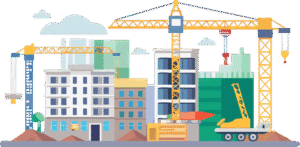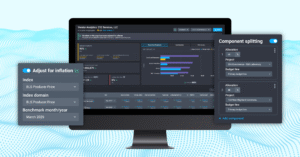It finally happened. At its September meeting, the Federal Reserve Open Market Committee voted to reduce interest rates by half a point. The move came much later than the industry hoped. Many leading experts opened the year with predictions that the first rate cut would come in March, followed by five others this year. That prediction, as it turned out, was merely wishful thinking. Still, the news of a significant half-point cut is long awaited by both investors and developers, and should help to motivate investment activity in the coming months.
Interest rate cuts are likely to boost development activity across the industry. For investors, the news of lowered rates will certainly help to support new acquisition activity and help to bridge the bid-ask pricing gap. For developers, lower interest rates will also help to support new construction activity, ensuring projects can pencil and are economically viable.
Here is a closer look at the changing rate environment and why it will support new construction starts.
The Beginning of a Declining Rate Environment
Commercial real estate players have been eagerly waiting for interest rates to decline, with many choosing to pause investment and new development activity until rates began to descend. Although that day came much later than expected, we are now in the beginning of a declining interest rate environment. Now, experts expect two other rate cuts following the .5% cut in September.
Federal Reserve Chair Jerome Powell set that expectation in August at the central bank’s annual retreat, telling reporters, “The time has come for policy to adjust,” because the economic risks that supported increased rates have subsided. “Inflation has declined significantly. The labor market is no longer overheated, and conditions are now less tight than those that prevailed before the pandemic,” Powell said. “Supply constraints have normalized. And the balance of the risks to our two mandates has changed.” Based on Powell’s comments and expert opinions, developers should expect interest rates to continue to fall this year and into 2025. By the end of next year, Federal Reserve projections estimate interest rates will fall into the low to mid 3% range.
Construction Capital Terms Will Likely Improve for Commercial Real Estate Developers
Interest rates are, of course, only one metric in securing the right funding for a project. In the last two years, construction loan terms also deteriorated, with higher loan-to-cost ratios and limited capital availability. In addition to capital constraints, developers have struggled to project asset pricing at the exit of the project. The market uncertainty has made it difficult for banks or equity partners to get comfortable partnering with a developer on a two- or three-year development horizon without a guaranteed positive outcome.
Thankfully, rate cuts will likely help improve the construction lending environment, providing confidence and clarity to capital providers. Lower interest rates are the first step toward improving construction lending conditions. Because construction tends to lag behind investment, developers expect that construction capital will begin to improve in 2025.
A Surge of New Construction Activity Is Coming
Earlier this year, when interest rates did not fall as expected, USA Today reported that the rate environment was “killing” new construction—everything from apartments to retail to wind farms, due to high construction costs. Interest rates alone have suppressed new construction activity, and now the opposite will be true. The lower rate environment will bring the total cost of new construction down and encourage new construction activity. Following the rate cut in September, CBRE global chief economist Richard Barkham said, “We’re in the trough, and we’re looking forward to the upswing.” CBRE predicts a 5% increase in investment activity and 15-20% increase in commercial real estate transaction activity.
Developers will see a similar surge. Construction Dive estimates an increase in new development, although it expects the uptick in new projects will trail investment activity. In addition, the publication said that more rate cuts are necessary to support more development. “If we have a series of rate cuts over the next three to six months, that will likely start to show up in lower construction [loan] rates and greater availability of equity investment toward the end of this year and into next year,” John Sullivan, chair of the U.S. real estate practice at DLA Piper, told the publication. “As rates come down, borrowing costs will also come down for many projects and there will be more real estate investment and construction activity.”
Lower interest rates are one step in bringing down the cost of construction and will help make more projects pencil. But, developers can also leverage modern real estate development software to lower development costs by streamlining operations and creating valuable efficiencies at every stage of a project’s lifecycle. Platforms like Northspyre utilize AI, automation, and predictive analytics to track and create budgets, forecast spending, facilitate vendor selection, and automate administrative tasks. These efficiencies have a significant impact on the bottom line, reducing budget overages by up to 66% and ensuring the project is delivered on time and on budget. While interest rates and construction costs have inflated development costs, Northspyre helps developers trim costs and achieve investment goals under any market conditions.
Download our ebook “How to Cut Development Costs by 2-6%” to learn more strategies and tools your organization can use to reduce costs amid a rapidly evolving real estate market.



